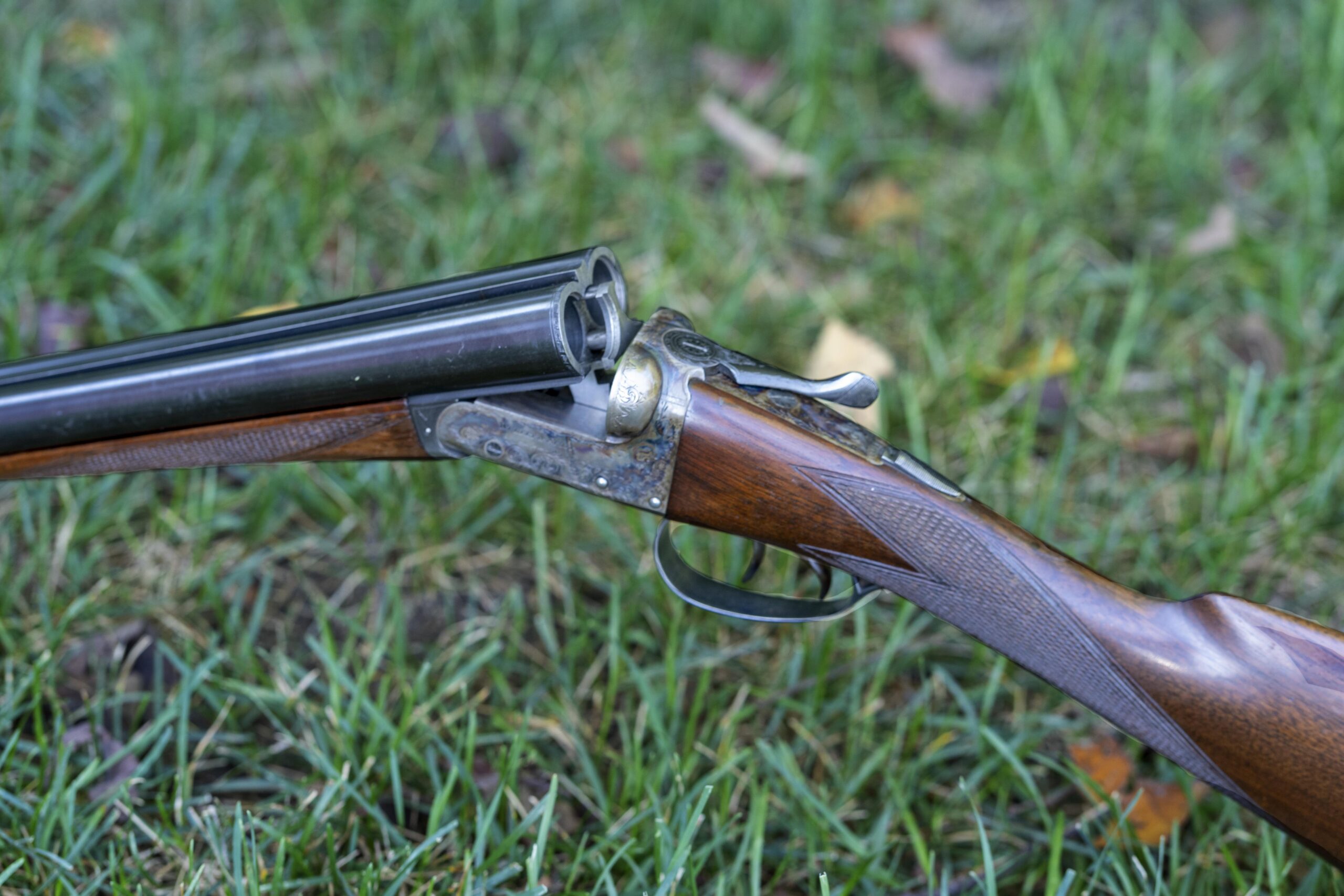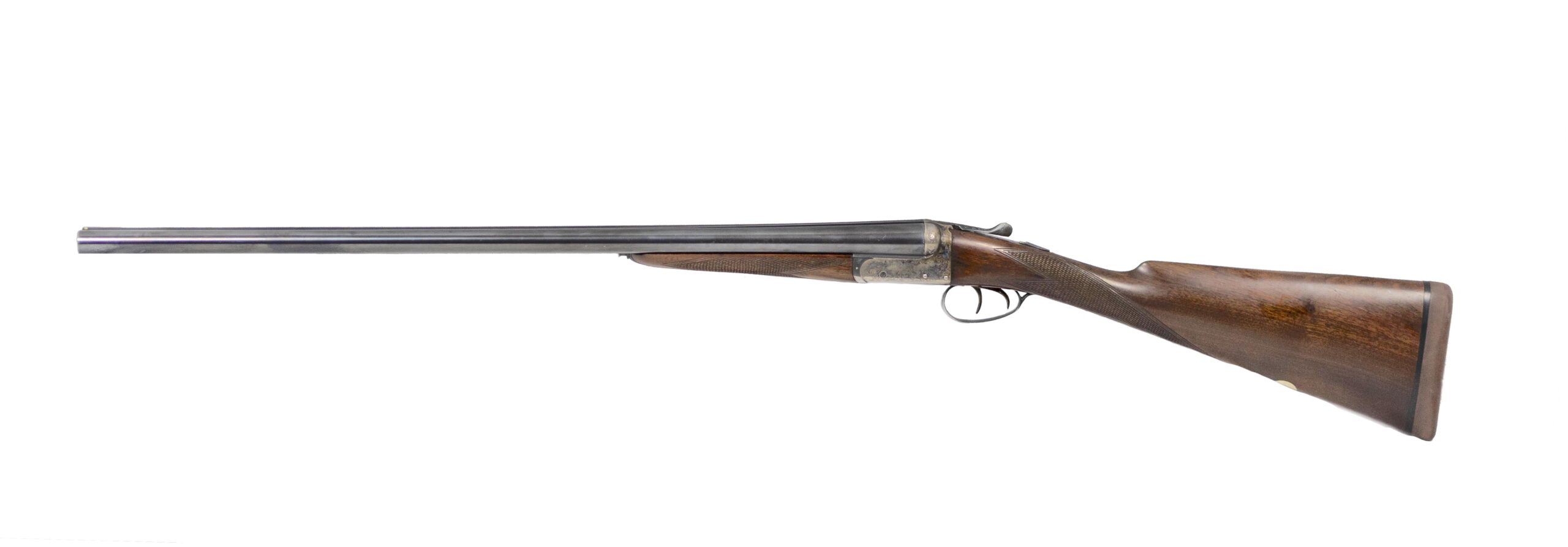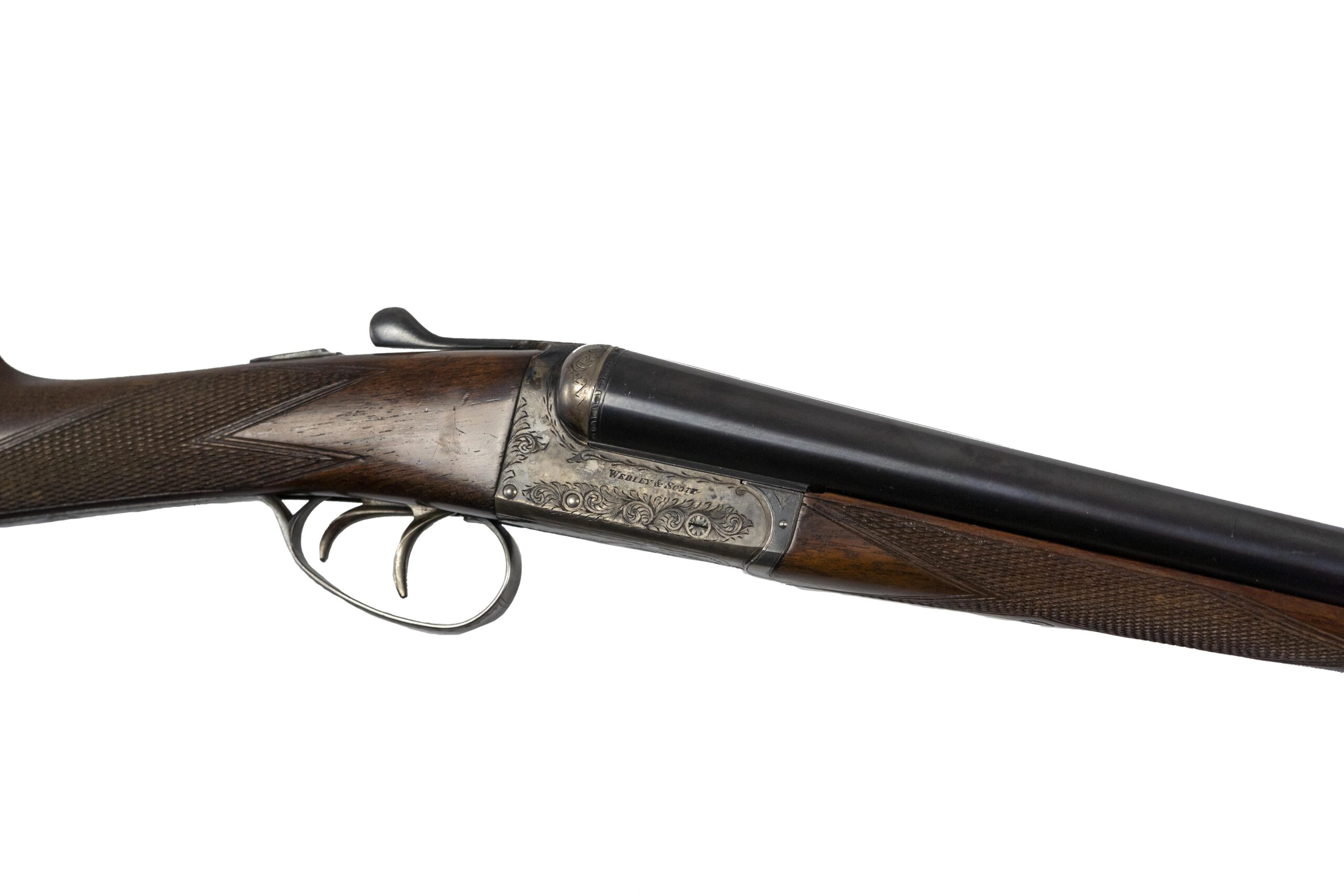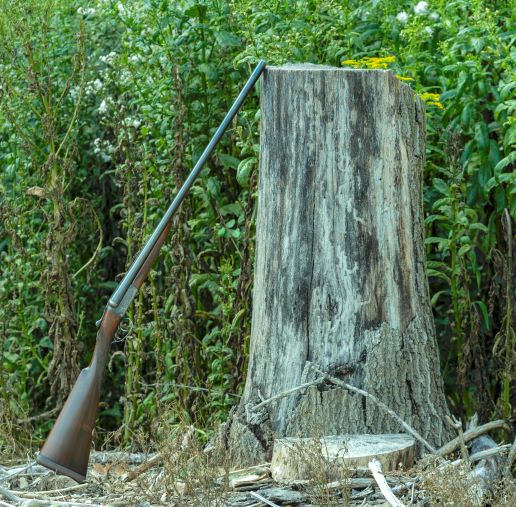
By Jim Dickson | Contributing Writer
(Images from MKS Supply)
More and more English shotguns are finding their way to our shores due to the increasingly restrictive anti-gun laws in England, and it is a blessing in one way to American shooters.
England has always been renowned for their exquisite handmade double barreled shotguns. While America has been a nation of riflemen, England has been a nation of shotgunners; a land where the elite gathered for driven grouse shoots much like the plantation owners in the old South gathered for hunts.
These men were used to the best quality that money could buy in all their goods and that also applied to their shotguns. A handmade “Best Quality” shotgun can easily take some of the most highly skilled craftsmen the world has ever seen 1200 hours or more to make depending on what is desired. I remember watching the late John Wilkes make some of the finest doubles ever made doing it entirely by hand without any power tools at all.
As it was a social disgrace to not hit your birds, no money was spared in perfecting the shotgun for game shooting. Superior handling and game hitting qualities enabled the side by side double to bury the over and under design that had come out at the same time.

Straight grip stocks aligned the hands more closely with the bore and enabled shots at grouse directly overhead. Fore ends were splinter type so that the hands would grasp the barrels. This alone increased hits four fold. The thumb was held alongside the barrels blocking the non-dominant eye’s view thereby preventing it from fighting the master eye for dominance and causing you to miss to the side at the odd time it succeeded. This is a problem that has no solution with the over and under where the master eye sees a narrow rib and the non-dominant eye sees the great mass of both barrels.
Weight distribution and balance were carefully adjusted and stocks were fitted to the individual user to a sixteenth of an inch in all directions. The result is a gun that literally comes alive in your hands and functions as an extension of your body. Man and gun are one at the instant of firing in a mystical Zen like experience that is the greatest thrill in the shooting sports.
To insure hits the British developed shooting schools where the art of wing shooting was perfected in a way that if your form is correct you WILL hit the bird. If it’s off a bit, the instructor will easily catch that and correct it so you are back to hitting again. Since the gun stock is fitted to you it will point exactly where your eyes are fixed so it is fired the instant it is cheeked without ever looking at the barrels. The gun is mounted with the muzzles pointed at the bird all the way up to your shoulder. You swing your whole body towards the bird, not just your shoulders. Push off with your right foot when swinging to the left and push off with the left foot when pivoting to the right.
You will note that the shotgun is pointed and fired without even looking at the barrels. Rifles are sighted. Shotguns are pointed. When You hear someone talking about “The single sighting plane of an over and under shotgun” you know that they are trying to aim it like a rifle instead of accurately pointing it as shotguns were designed to be used.
There are three action types, the boxlock which can be the Anson and Deeley type or the Greener facile princips, the sidelock, and the Dickson round action. All involve many hours of hand fitting to tolerances far beyond what machines can produce on guns. The result is a gun for the generations.
At the shooting schools where they keep track of how many shells each gun has fired, it is common to find a double that has fired 5 or 6 million rounds yet has no measurable wear. There is a saying in the gun trade that you buy a “Best Quality” gun for your grandchildren because they will be using it long after you are gone. This is in sharp contrast to machine made guns.
Do you get your money’s worth? Many decades ago I wore out two of the finest American doubles fast. I then got a 1906 Thomas Horsley Best Quality 12-gauge and I have never been able to put any measurable wear on it no matter how many rounds I fire. Once Robin Nathan of Purdey gave me a proper stock fitting and I had the stock altered to those dimensions I quit missing birds. The thrill of hunting with a gun that merges with your body at the instant of firing is indescribable and something that has to be experienced to be understood and appreciated.
Among the British shotguns coming to these shores now are quantities of Webley & Scott side-by-side doubles. While Westley Richards’ employees Anson and Deeley invented the action that bears their name, nobody made more of them in England than Webley & Scott. Often called “Gunmakers to the trade,” Webley & Scott furnished bits and pieces, barreled actions, and complete guns to many, if not most of the big names in the gun trade. They made the Holland and Holland boxlocks as well as the Holland & Holland Badminton sidelocks. They made all of William Evans boxlocks and it is thought likely that they made the boxlocks that Purdey sold at the turn of the century.

They also made the Rigby boxlocks up to the barreled action stage and after 1930 they also made the Rigby sidelocks. Many of the Jeffrey boxlocks were made by them although Jeffrey outsourced to many in the trade. Almost all the boxlocks made under the Army Navy label for the Army Navy stores where the British officers bought their gear were made by them as well. At one time Webley and Scott had over 2000 workers busily hand making guns. They even imported magnum Mauser actions and assembled them into rifles for William Evans.
Finished mechanically to the same standards as their Best Quality guns the basic Webley & Scott was a plainer, standardized gun without the fancy wood and individualized custom features of a bespoke “Best Quality” gun that would run the hand work time up. This substantial saving was passed along to the customer for every English shooter knew the value of a quality gun and since there were always more descendants than guns to pass down most had to buy their own gun. They also made Best Quality guns at a higher price.
The workmen at the bench who actually made the guns were long underpaid. Many belonged to the Long Sufferers Association, and aptly named group for gunmakers. Today with other industries siphoning off skilled workmen with high salaries, this amount of hand work raises the price far beyond what it used to be thus making the older guns real bargains. These days the British gunmakers are having to charge some frighteningly high prices just to survive with what they are having to pay their workmen.
One of the oldest gunmakers in the British Isles, the Webley firm was founded in 1790 by William Davies and taken over by his son-in-law Philip Webley, along with his brother James, in 1834. Their first production revolver was the Longspur in 1853. In 1857 they joined with W & C Scott & Sons to form The Webley & Scott Revolver & Arms Co. Ltd. Of Birmingham. They made the first Webley
.455 top break revolver in 1880 and it was adopted by the army in 1887. In WW1 they made 310,000 of the later model VI revolver.
During all this time they also made shotguns, double rifles, and they became famous for their air guns as well. The 700 series of side-by-side shotgun was brought out in 1949 and it was an instant success. These and other British and Scottish shotguns are being forced out of England and onto our shores by the increasingly draconian British anti-gun laws. One of the former top men at Purdey, the gunmaker to the Queen, had to give up his shotguns as his district was requiring a psychiatric exam every time a gun permit was renewed. Needless to say, with woke anti-gun psychiatrists, no one had a very good chance of passing and who wants to be put through such an indignation? Even worse, I have known skilled gunmakers who were denied immigration to the U.S. including one worth over a million dollars and wanting to open a business here. The U.S. would not let him in to become a citizen.
Another most highly respected member of the gun trade can’t even come here to visit since our government lost some of their records of his previous visits and used that as an excuse to say he had entered or left illegally in the past. It seems the government’s anti-gun sentiment over here can be extremely hostile to skilled members of the gunmaking trade wanting to relocate here at times.
Right now is the best time in history to scoop up some of these shotguns their owners are being forced to sell. Prices are just going to go up and there are fewer and fewer truly handmade ones being produced. Those that are tend to have shockingly high prices.
The best reason to buy one is the reason they were made in the first place. They are the most efficient game getting shotguns ever made. When stocked to fit you they come alive in your hands where it can be almost impossible to miss with them. They offer a shooting experience of the gun and man merging at the moment of firing. It is the greatest thrill in the shooting sports and they last seemingly forever with proper care.
Sources:
Imported used English Webley & Scott shotguns:
MKS Supply
8611-A North Dixie Drive
Dayton, Ohio 45414
877-425-4867
Gun fitting:
Keith Upton
3 Landt Lane
Pound Ridge, NY 10576
914-646-1528
Chris Batha
Chris Batha Shooting Solutions for Wing and Clay
43 State Road S-7-50
Okatie, South Carolina 29909
866-254-2406
Gun stocks altered to fit or made from scratch:
Paul Hodgins
Hodgins Gunstocks
P.O. Box 3546
Logan, Utah, 84323
paul@hodginsgunstocks.com




